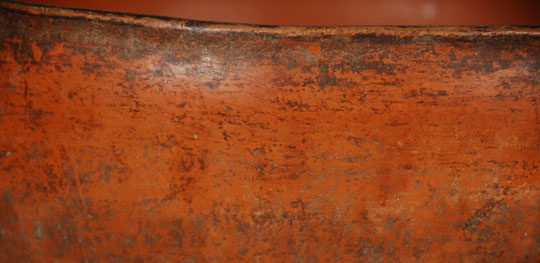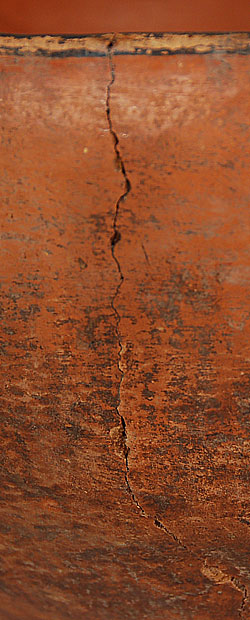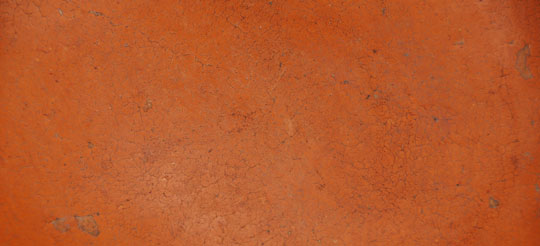Zuni Pueblo 19th Century Very Large Dough Bowl [SOLD]
+ Add to my watchlist Forward to Friend
- Category: Historic
- Origin: Zuni Pueblo, SHE-WE-NA
- Medium: clay
- Size: 10” deep x 20-1/2” diameter
- Item # C3271 SOLD

 When this very large dough bowl was brought in to the gallery, my first thoughts and first comments were "what a great Isleta dough bowl." Then after looking it over carefully, I noticed it lacked the traits of Isleta—there was no red band at the rim on the exterior and the rim was painted black on top—two things that were not right for Isleta. The only origin could be Zuni Pueblo, which proved to be correct.
When this very large dough bowl was brought in to the gallery, my first thoughts and first comments were "what a great Isleta dough bowl." Then after looking it over carefully, I noticed it lacked the traits of Isleta—there was no red band at the rim on the exterior and the rim was painted black on top—two things that were not right for Isleta. The only origin could be Zuni Pueblo, which proved to be correct.
It is important to know a little about the history involving Zuni Pueblo before continuing on the story about this bowl. The Bureau of Ethnology (BAE) was created by an act of Congress in 1879 and put under the control of the Smithsonian Institution, with John Wesley Powell as its first director. He wasted no time in setting up his plans for the BAE. Within a few months, he sent an expedition to visit Zuni Pueblo to collect material from and information about the Zuni culture.
Colonel James Stevenson and his wife, Matilda Coxe Stevenson, departed for Zuni on August 1, 1879 to collect for the BAE. John K. Hillers, photographer, and Frank Hamilton Cushing, ethnology assistant at the Smithsonian, accompanied the Stevensons.
On their first expedition, the Stevensons collected over 4000 items and sent them back to the Smithsonian. They returned to Zuni on a second expedition in 1881 and collected another 3700 items. Their third trip to Zuni, in 1884-1885, resulted in more items. Overall, the pottery items from the three expeditions totaled over 5000. Between 1879 and 1916, it is estimated that over 13,500 items were collected from Zuni Pueblo and sent to the Smithsonian.
In 1884, among the items collected by the Stevensons, were two red-slipped undecorated bowls of the same style as this large dough bowl. They dated to ca. 1870-1880 and were about 5-1/2" deep x 10-1/2" diameter. One must wonder why, in three expeditions, the Stevensons did not see and procure this larger bowl along with the smaller ones. There is reason to believe they would have had they seen it. Since it has a lateral crack from rim to base, the bowl had probably been retired from use and put in storage somewhere in the owner's home where the Stevensons did not see it. A second scenario is that the family refused to let the Stevensons have it on the first expedition but agreed to make similar ones for them to pick up on a future expedition.
Of course, all of this is speculation, but what we do know is that the bowl stayed at the pueblo until just recently, that it dates to circa 1870s decade, and that we now have it available at the gallery and are pleased to have it. It is by far the largest Zuni dough bowl we have ever seen and the only red-slipped one in our memory.
The exterior of the bowl does not have any slip added. It consists only of the stone-polished natural clay. Rich red/orange slip covers the entire inner surface of the bowl and that has been polished. The only other decoration is the thin black painted line on top of the rim.
Condition: The bowl is in extraordinary condition for its age. There is a lateral crack running from the rim to the base and it has been stabilized but not concealed.
Provenance: from Zuni Pueblo via a resident of New Mexico
Recommended Reading: The Pottery of Zuni Pueblo by Harlow and Lanmon

- Category: Historic
- Origin: Zuni Pueblo, SHE-WE-NA
- Medium: clay
- Size: 10” deep x 20-1/2” diameter
- Item # C3271 SOLD



